If you want to get stronger and more muscular, deadlifts should be part of your workouts. The deadlift is one of the best barbell exercises you can do. Bodybuilders do them to build back width and thickness, while powerlifters use them to develop full-body strength. You can even use deadlifts to help you lose weight and get ripped.
So, whatever you are training for, deadlifts will help you achieve your goals. As the meme says, if the bar ain’t bending, you’re just pretending!
But what type of deadlift should you choose? After all, there are lots of options, including:
- Deficit deadlift
- Dumbbell deadlift
- Kettlebell deadlift
- Partial deadlift
- Paused deadlift
- Rack pulls
- Reeves deadlift
- Romanian deadlift
- Single-leg deadlift
- Snatch grip deadlift
- Stiff leg deadlift
- Suitcase deadlift
- Trap bar deadlift
The list is almost endless!
However, the most important deadlift choice most lifters have to make is between sumo and conventional stance deadlifts.
In simple terms, sumo deadlifts are done with a wide stance, while conventional deadlifts use a shoulder to hip-width stance. Both have pros and cons, so it’s essential to choose the right one for your goals.
Level Up Your Fitness: Join our 💪 strong community in Fitness Volt Newsletter. Get daily inspiration, expert-backed workouts, nutrition tips, the latest in strength sports, and the support you need to reach your goals. Subscribe for free!
In this article, we’re going to compare and contrast sumo and conventional deadlifts so you can pick the one that’s best for you.
Sumo Deadlift 101
Sumo deadlifts are used mainly by powerlifters looking to lift as much weight as possible. Done with a very wide stance, some lifters feel stronger and more comfortable with their feet far apart. That said, the sumo deadlift is also a helpful hypertrophy or bodybuilding exercise.
Muscles Worked
The sumo deadlift is a compound exercise, which means it involves two or more joints working simultaneously. The main muscles involved in sumo deadlifts are:
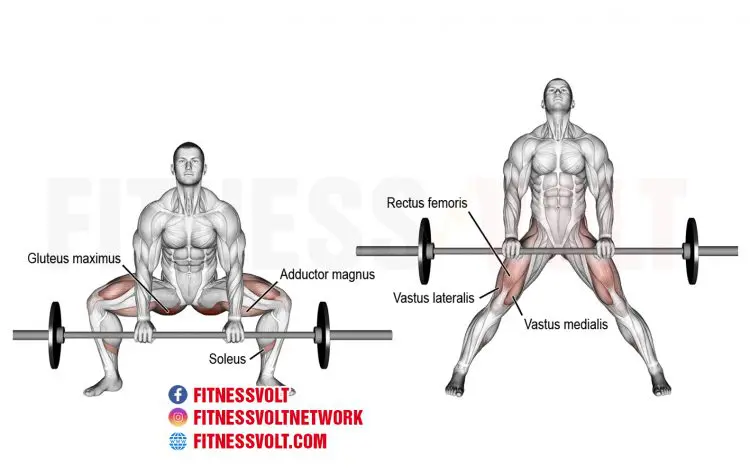
- Gastrocnemius and soleus – calf muscles
- Hamstrings – rear of the thigh
- Quadriceps – front of the thigh
- Gluteus maximus – bottom/butt muscles
- Hip abductors – muscles on the outside of the hips and thighs
- Hip adductors – muscles on the inside of the thighs
- Erector spine – muscles on either side of your spine
- Core muscles – deep muscles surrounding your internal organs
- Rhomboids and trapezius – muscles of the upper back
- Latissimus dorsi – side upper back muscles
- Deltoids – muscles of the shoulder
- Biceps and triceps – front and back of the upper arm
- Forearm flexors – gripping muscles
Sumo deadlifts are generally done using a barbell but can also be done using a single dumbbell or kettlebell.
How to Do Sumo Deadlifts:
- Position your barbell so it’s roughly nine inches from the floor. Ideally, you should use bumper plates to achieve this. Standing behind the bar, take a wide stance, so your feet are close to the weight plates. Turn your toes out slightly. The bar should be almost touching your shins, which should be close to vertical.
- Hold the bar with a shoulder-width overhand or mixed grip. Your back should be slightly arched, core braced, arms straight, shoulders down and back, and hips higher than your knees.
- Without rounding your lower back, push through your heels and midfoot and extend your knees, keeping the bar close to your legs.
- As the bar passes your knees, drive your hips forward to finish off the movement.
- Stand up straight but do not lean back or attempt to bend your arms, as doing so could cause serious injury.
- Push your hips back, bend your knees, and return the weight to the floor.
- Allow the weight to settle for a second and then repeat.
Read more about the sumo deadlift here.
Sumo Deadlift Pros
There are several reasons that sumo deadlifts could be the best deadlift variation for you, including:
Less lower back stress – compared to conventional deadlifts, you can keep your torso more upright during sumo deadlifts. This puts less stress on your lumbar spine and the erector spinae muscles. In addition, the weight stays closer to your base of support during sumo deadlifts, further taking pressure off your back.
While your back is still involved in sumo deadlifts, if conventional deadlifts cause back pain or you have a back injury, sumo-style deadlifts could be your best choice.
More glute and quadriceps engagement – sumo squats activate your glutes and quads more than conventional deadlifts (1). You basically “squat” the weight up with sumo squats, which means these muscles work harder. If you want to beef up your quads and glutes but prefer to deadlift instead of squat, sumo deadlifts could be a valuable addition to your workouts.
More inner thigh engagement – wide-stance sumo squats involve more hip adductor activation than using a shoulder-width stance. After all, that’s why a lot of lifters do wide stance squats. In fact, in terms of lower body joint movement and muscle activation, wide stance squats and sumo deadlifts are very similar.
Lift heavier weights – starting with a wide stance means that sumo deadlifts involve a shorter range of motion than conventional deadlifts. This means that you may be able to lift more weight with your feet farther apart. Because of this, sumo deadlifts are popular with competitive powerlifters looking to lift the greatest amount of weight.
Better for taller lifters – while not always the case, a lot of taller lifters find sumo deadlifts more comfortable than the conventional variation. That’s because you don’t have to bend over as far to reach the bar. If you find it hard to do conventional deadlifts without rounding your lower back, sumo deadlifts may be a better choice.
Sumo Deadlift Cons
Like every exercise, there are a few drawbacks to sumo deadlifts, too:
Less posterior chain engagement – while your glutes, hamstrings, and lower back are involved in sumo deadlifts, these muscles tend to work harder during conventional deadlifts. If you want to train your hamstrings and lower back more, you will probably need to supplement your sumo deadlift workouts with Romanian deadlifts or barbell hip thrusts.
Not the most natural movement – some lifters find that sumo deadlifts feel awkward. After all, if you have to bend down to lift something heavy outside of the gym, you probably won’t adopt a wide stance to do it. A conventional deadlift stance often feels more natural. It may take several weeks or months of practice for sumo deadlifts to feel natural, especially if you mainly did conventional stance deadlifts in the past.
Increased flexibility demands – you’ll need good hip mobility and flexibility to deadlift with a sumo stance. If you have very tight hips, you may not be able to do sumo deadlifts safely or comfortably.
Conventional Deadlifts 101
Conventional deadlifts are among the most recognizable exercises and the type of deadlift that most lifters tend to use. It’s called conventional for a reason! Powerlifters hoist huge weights using the conventional stance, and they’re popular with bodybuilders, too. Back in Victorian times, the deadlift was known as the “health lift,” which should give you an idea of just how beneficial this exercise can be.
As well as being a great exercise, conventional deadlifts also teach you how to safely lift heavy objects off the floor, i.e., using your legs and without rounding your lower back.
Muscles worked
Conventional deadlifts are a compound exercise, which means they involve two or more joints working simultaneously. The main muscles involved in conventional deadlifts are:
- Gastrocnemius and soleus – calf muscles
- Hamstrings – rear of the thigh
- Quadriceps – front of the thigh
- Gluteus maximus – bottom/butt muscles
- Erector spine – muscles on either side of your spine
- Core muscles – deep muscles surrounding your internal organs
- Rhomboids and trapezius – muscles of the upper back
- Latissimus dorsi – side upper back muscles
- Deltoids – muscles of the shoulder
- Biceps and triceps – front and back of the upper arm
- Forearm flexors – gripping muscles
Conventional deadlifts are generally done using a barbell but can also be done with dumbbells.
How to do conventional deadlifts:
- Set your barbell, so it’s nine inches above the floor. Using bumper plates usually does this automatically.
- Stand with your toes under the bar, feet about hip to shoulder-width apart.
- Reach down and grip the bar with an overhand or mixed grip.
- Straighten your arms, pull your shoulders down and back, and brace your abs. Your hips should be below your shoulders, and your lower back slightly arched.
- Without bending your arms or rounding your lower back, drive your feet into the floor and stand up.
- Do not lean back at the top or attempt to bend your elbows, as this can cause serious injury.
- Push your hips back, bend your knees, and lower the bar back to the floor.
- Let the weight settle for a second or two, and then repeat. Do not bounce the bar off the floor.
Read more about deadlifting with perfect form here.
Conventional Deadlift Pros
Sumo and conventional deadlifts share many benefits. However, there are a few reasons why conventional deadlifts may be your best choice:
A great back builder – bodybuilders tend to do conventional deadlifts on back day. They’re a valuable exercise for building a thicker, wider back. Because they involve more forward lean than the sumo variety, conventional deadlifts also provide more work for your erector spinae or lower back muscles. In contrast, sumo deadlifts are somewhat more lower body-dominant and provide less of an upper back workout.
Level Up Your Fitness: Join our 💪 strong community in Fitness Volt Newsletter. Get daily inspiration, expert-backed workouts, nutrition tips, the latest in strength sports, and the support you need to reach your goals. Subscribe for free!
A stronger posterior chain – because you have to lean forward to do conventional deadlifts, they involve more posterior chain engagement than the sumo variety. The posterior chain is the collective term for the muscles on the back of your body, particularly the hamstrings, glutes, and spinal erectors. These muscles ARE trained when you do sumo deadlifts, but the conventional stance hits them harder.
Easier to learn – compared to sumo-stance deadlifts, conventional deadlifts feel more natural, which makes them easier to learn. If you have to bend down and pick soothing off the floor, the chances are you’ll automatically do something similar to a conventional deadlift.
Better for “grip and rip” style lifting – getting set to do sumo deadlifts takes time. Wide stance deadlifts are a little more technical, and your approach needs to be more controlled and measured. In contrast, setting up to do conventional deadlifts is generally quicker and simpler. If you like to lift aggressively and grip and rip your deadlifts, the conventional stance may be a better choice.
Conventional Deadlift Cons
Like every exercise, there are a few cons to doing conventional deadlifts, too:
More lower back stress – with your hips further away from the bar at the start of conventional deadlifts, there is more stress on your lower back during this variation. The longer your legs and spine, the greater this stress tends to be. You’ll also need good hamstring flexibility to get into the correct starting position without rounding your lower back. In contrast, sumo deadlifts are somewhat more lower back-friendly.
Less quad and glute engagement – if you want bigger quads and glutes, conventional deadlifts may not be your best choice. You’ll probably need to supplement your workouts with leg presses and squats to develop your legs fully. Some lifters even deem conventional deadlifts to be more of an upper-body than a lower-body exercise and do it on back training days.
Sumo Deadlift Vs. Conventional Deadlift
So, now that you know a little more about sumo and conventional deadlifts, let’s judge these exercises by a few different criteria:
Sumo Deadlift Vs. Conventional Deadlift: Strength
Both types of deadlifts can help you build massive levels of strength. But, the most effective strength builder will be the one that allows you to lift the most weight. That will be sumo stance deadlifts for some, but for others, it’ll be the conventional deadlift.
The only way to see which one increases your strength the most is to do them both for a few months and see how your body responds.
Sumo Deadlift Vs. Conventional Deadlift: Hypertrophy
If you want bigger quads, glutes, abductors, and adductors, sumo is the way to go. When you do sumo deadlifts, you basically squat the weight up, increasing lower body engagement.
In contrast, if you want a wider, thicker back, conventional deadlifts will probably be your best choice.
If you can’t decide between sumo and conventional deadlifts, consider doing sumo on leg training day and conventional on back day. However, make sure you program these workouts so that they’re a few days apart to allow adequate time for rest and recovery.
Sumo Deadlift Vs. Conventional Deadlift: Variety
One of the best ways to avoid progress plateaus is to change your workout from time to time and use variations of your main exercises. In many cases, simply altering the width of your grip or angle of your arms is all that’s needed to avoid workout ruts.
There are many different ways you can modify deadlifts to maintain your progress. Most of them can be applied to both sumo and conventional deadlifts. Some of your options are:
- Deficit deadlifts – standing on 4 to 6” platform to increase range of motion
- Deadlifts with chains or bands – to increase load as you approach lockout
- Paused deadlifts – pause with the bar at knee height for 2-5 seconds
- Speed deadlifts – use 50% of your 1RM and lift the bar as fast as you can
- Rack/block pulls – start each rep with the bar at just below knee height
Sumo Deadlift Vs. Conventional Deadlift: Ease of learning
While ease of learning is entirely subjective and difficult to measure, lifters tend to pick up conventional deadlifts quicker and more easily than sumo style. That’s probably because conventional deadlifts feel more natural.
However, the only way to see if conventional deadlifts really are easier than sumo deadlifts is to try them both. Be your own experiment!
Sumo Deadlift Vs. Conventional Deadlift: Safety
The great thing about deadlifts (compared to squats and bench presses) is that if you cannot complete a rep, you can just drop the weight to the floor and won’t get pinned under a heavy bar. Therefore, both exercises are pretty safe.
That said, because sumo deadlifts allow you to maintain a more upright torso, the risk of back injury may be lower than for conventional stance deadlifts. Of course, that’s assuming that your technique is perfect for both lifts. A poorly performed sumo deadlift is riskier than a well-performed conventional deadlift.
Sumo Deadlift Vs. Conventional Deadlift: Functionality
The next time you bend down to pick up something heavy, such as a child, pet, or a bag of groceries, notice your foot position. The chances are that you’ll adopt a shoulder-width stance without thinking about it.
The same is true for most jumping and running-type activities – they’re usually done using a shoulder to hip-width stance.
The only time you’ll do anything in a sumo stance is a) sumo wrestling(!), b) sumo deadlifts, and c) wide-stance squats. The rest of your time, your feet will be around shoulder-width or less.
Because of this, while both deadlifts have some functional carryover, conventional deadlifts are the most functional of the two.
Wrapping Up
Sumo and conventional deadlifts offer many of the same benefits and even share some of the same drawbacks. One thing that’s clear is that, whatever you are training for, you need to deadlift hard and heavy. Almost everyone who works out should do some type of deadlift!
But, which should you choose – sumo or conventional?
If you want to focus more on your legs than your back, are tall, or want to lift as much weight as you can, sumo deadlifts are probably your best choice.
But, if you want to beef up your back and develop full-body strength, you may benefit more from conventional deadlifts.
Of course, there are always exceptions to these guidelines, so the best way to determine the right deadlift for you is to try them both. Not just for a week or a month, but for several months so you can get a better idea of how each one affects your body.
Or, why not do them both? Do sumo deadlifts in your leg workouts and conventional deadlifts when you train your back. That way, you can enjoy all the benefits of these two fantastic exercises.
Whatever you decide, know that the deadlift is probably the most productive exercise in your workout!
References:
1 – PubMed: An Electromyographic Analysis Of Sumo And Conventional Style Deadlifts https://pubmed.ncbi.nlm.nih.gov/11932579/
Interested in measuring your progress? Check out our strength standards for Bench Press, Stiff Leg Deadlift, Rack Pull, and more.

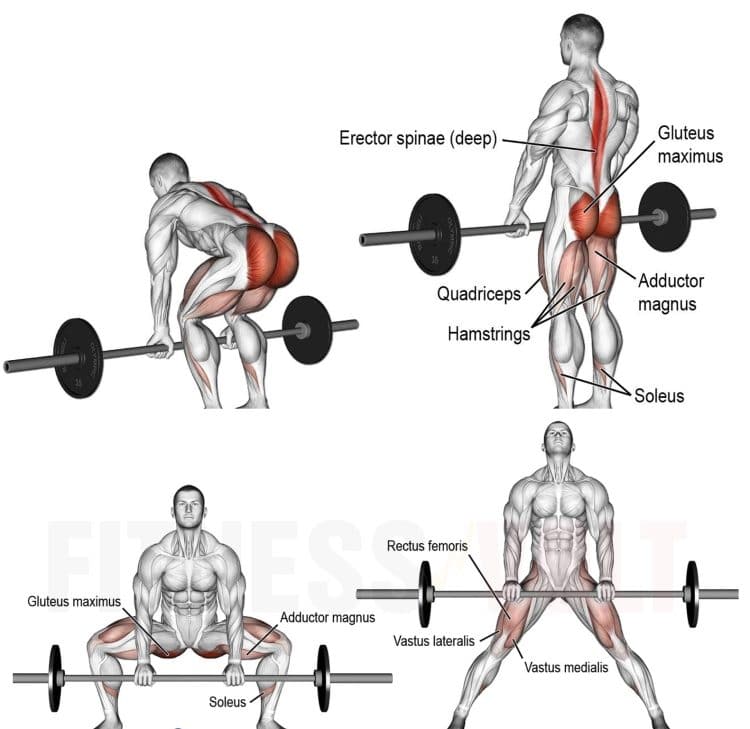
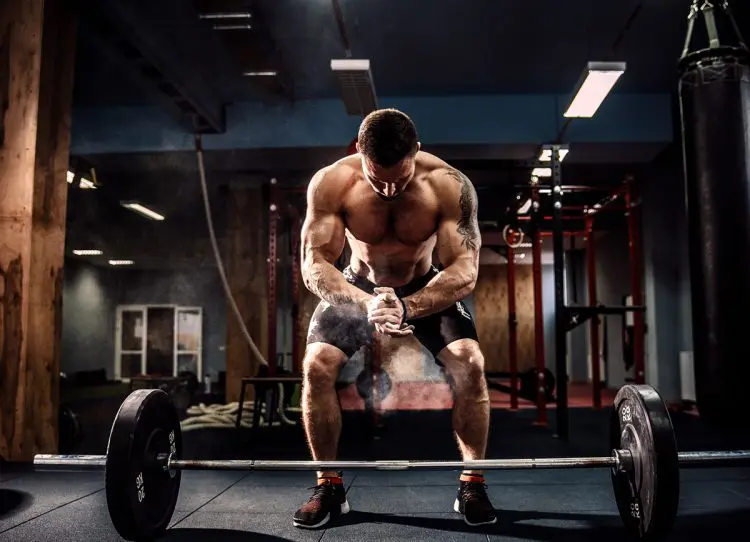
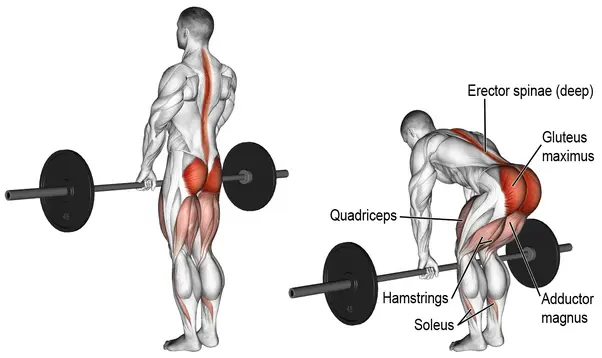

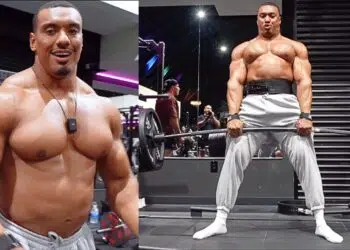

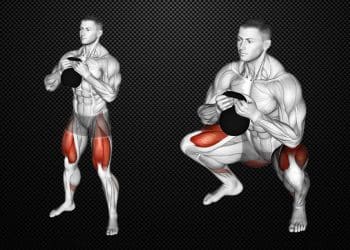

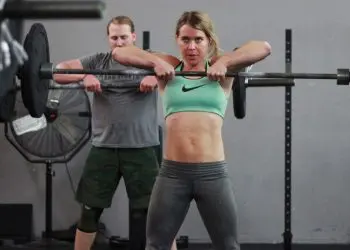
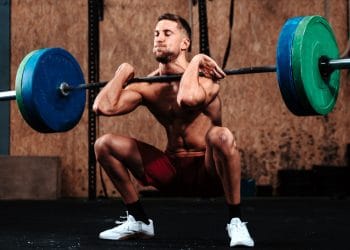

Thank you for citing your source! It was great to read the actual study. Much appreciated <3
You are very welcome Ange – happy lifting 🙂